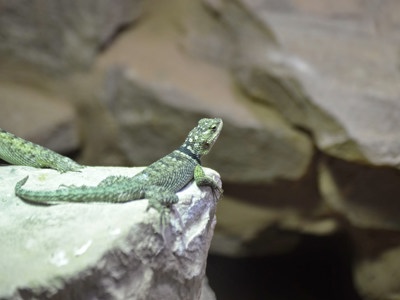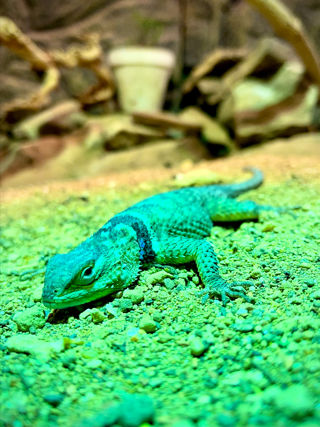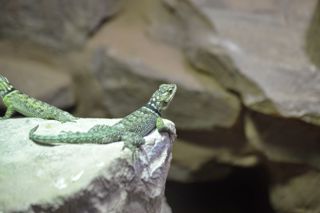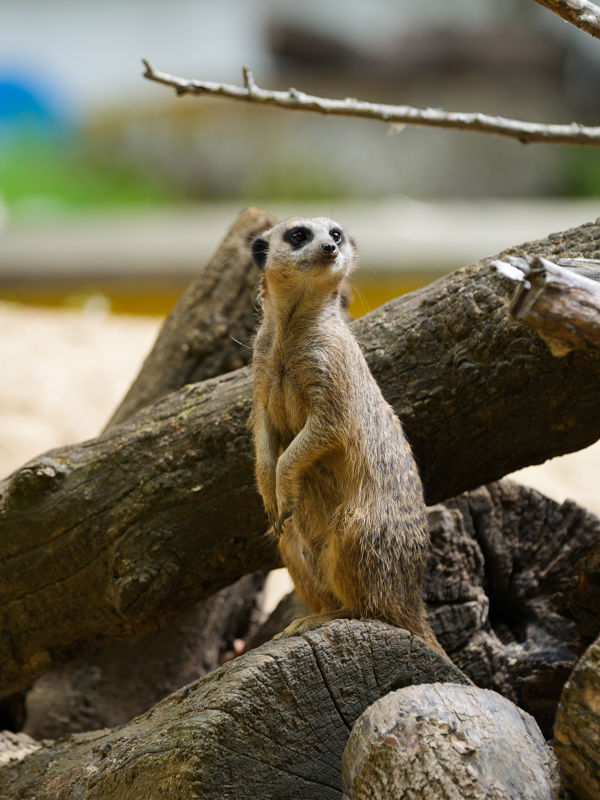
Blue Spiny Lizard

General Information
This species is the biggest of the spiny lizards, they can be up to 14 inches in length, including the tail. Tails are longer than the body. This is a stocky, grayish-brown lizard with white spots on the head and back and a distinctive white-bordered black collar around the neck. Males have a blue-green sheen to their backs and a blue chin, throat and belly.
This lizard is a good climber of rocks and trees, but can also be found on the ground. They are called spiny lizards because of their large, pointed scales. The spines may deter some predators and the tail can break off as an escape mechanism.
They feed on a diet that includes a variety of invertebrates, especially flying insects. At the zoo they particularly enjoy locusts and crickets!
Unusually, these lizards are ovoviviparous, meaning they give birth to live young. From February to June, females give birth to 6-18 offspring.

Latin name - Sceloporus serrifer
Class - Reptilia
Family - Phrynosomatidae
IUCN Status - Not Evaluated
Habitat - Desert
Distribution - Southern Texas, Mexico and Central America
They feed on a diet that includes a variety of invertebrates, especially flying insects. At the zoo they particularly enjoy locusts and crickets!
Unusually, these lizards are ovoviviparous, meaning they give birth to live young. From February to June, females give birth to 6-18 offspring.

Sign up to our newsletter
Join our mailing list in order to keep up to date with Zoo news and special offers.

